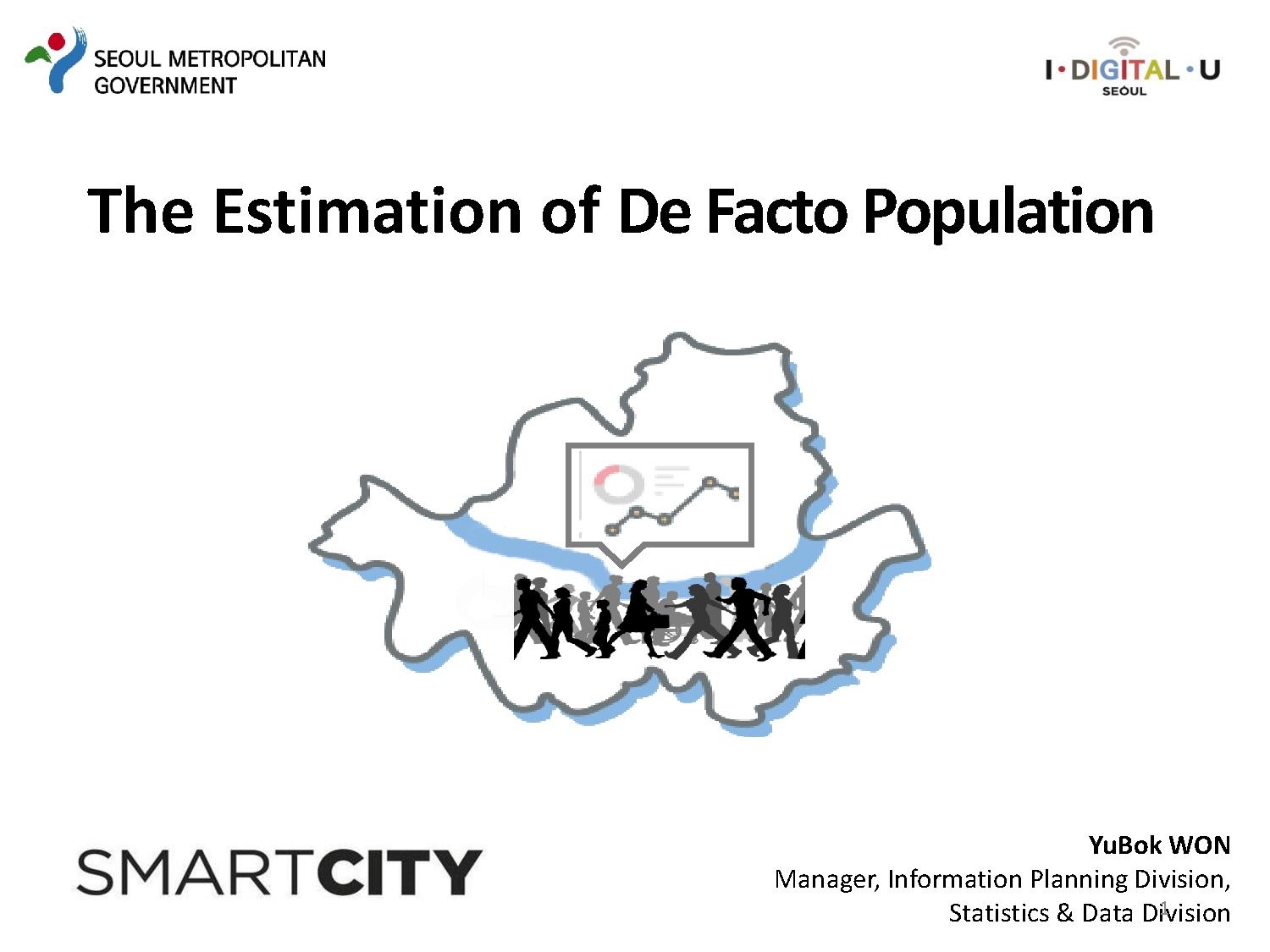Estimation of De Facto Population
Jump to navigation
Jump to search
| Estimation of De Facto Population | |
|---|---|

| |
 Seoul South Korea | |
| Team Organizations | Korea Telecom (KT) |
| Team Leaders | YuBok Won |
| Participating Municipalities | Seoul Korea |
| Status | Ready for Public Announcement |
| Document | 
|
Description
Key Deliverables
- The starting point for us was this simple question; “Why does the public service demand keep growing as the resident population in Seoul is in decline? With pricier real estate, more citizens live outside Seoul, but commute to work and shop. How can we estimate the amount of citizens using public services in Seoul? It is the residents of the city plus those who work there during specific hours, but this is difficult to measure.
- A term from OECD, “de facto population,” is a concept under which individuals (or vital events) are recorded (or are attributed) to the geographical area where they were present (or occurred) at a specified time.
Challenges
- As gathering data entails personal information, it has always been a challenge to have individuals provide data
- Security is also an issue as personal data, such as location must be kept confidential
- Gathering data with private companies, such as Korea Telecom requires a high degree of trust
Solutions
- Thus Seoul has been working closely with the private sector which has built up ample trust to be able to work together, even with sensitive issues such as personal data
- Data security is enhanced through non-disclosure clauses as well as utilizing closed servers and other cyber-security enhancements
- Personal data is also anonymized through aggregation
Major Requirements
- First, we counted the number of smartphone users for each mobile base station. The market share of Korea telecoms and the percentage of smartphone users and switched-on mobile phones in Seoul are factored into the adjustment.
- The number of LTE signals had to be modified in a way that ruled out demographic discrepancies
- And since children under the age of 9 and the elderly aged over 80 have a low cellphone usage rate, this factor was also considered and controlled for.
- Calculated the de facto population for each of the 19,500 zones in Seoul.
- Number of smartphone signals in these zones at any given time also give a better picture of where citizens are at certain times, in order to create more optimized public services, particularly in transportation.
Performance Targets
| Key Performance Indicators (KPIs) | Measurement Methods |
|---|---|
|
|
Standards, Replicability, Scalability, and Sustainability
- Requires interoperable GPS, AVL and CAD interfaces, which is quite ubiquitous among other cities, ensuring replicability
- Standardized processes are not unique to city or region and can be replicated and scaled up in multiple cities/communities.
- The system will have its own business model to create sustainable stream.
Cybersecurity and Privacy
As mentioned above, aggregation is being utilized to ensure individual privacy of the citizens even in the event of a security breach. Standard network security features, from firewall, WPA etc. has been implemented to ensure that breaches cannot occur.
Impacts
- The value of de facto population is more prominent in the private sector.
- Companies can display their advertisements more effectively, by taking into consideration their customer’s age and gender.
- Improving quality of lives
Demonstration/Deployment
TBD